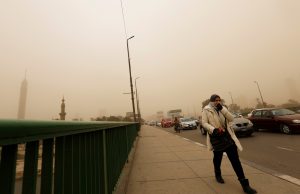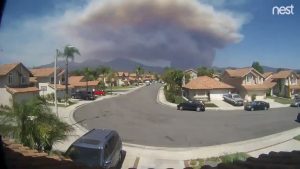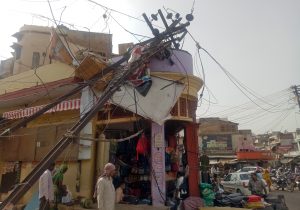
By Julia Love and Daina Beth Solomon
MEXICO CITY (Reuters) – Shortly after boarding her flight in the northern Mexican state of Durango afternoon on Tuesday afternoon, Ashley Garcia had a premonition that something was wrong.
The 17-year-old high school student from Northlake, a suburb of Chicago, was one of 65 U.S. citizens among the 103 passengers and crew aboard the Aeromexico passenger jet that crashed near the runway shortly after take-off.
Settling into her seat, Garcia saw a storm was gathering fast in the distance, and by the time the aircraft began preparing for takeoff it was battered by strong winds, hail and rain. Garcia captured the scene through her window with her cellphone.
“I had a gut feeling: just record it, just record it,” said Garcia. “I was like, there’s no way we are taking off, it’s too risky.”
The flight crashed moments after taking off, skidding to a halt in scrubland near the runway, a wing in flames. Passengers described how they followed escape procedures, enabling everyone to evacuate without any fatalities.
“We had been told so many times what to do,” Garcia said of the safety protocol passengers around the world are taught every time they board a plane. “No one ever thinks it’s going to happen until it happens to them. We were there for each other… That’s how we were able to get off safely.”
Investigators found the Embraer passenger jet’s recorders on Wednesday and have still to determine the cause of the crash. Aeromexico said 64 people have been released from hospitals. Two people, including the pilot, were more seriously injured.
Garcia was returning to the United States with three cousins after a two-week trip to visit relatives, traveling from Durango to Mexico City to catch a connecting flight to Chicago.
Liliana Gallarzo, Garcia’s cousin, thought the bumpy take-off was turbulence until the aircraft began skidding and panic set in.
“We were screaming,” said Gallarzo, a 19-year-old college student from Chicago. “Everyone was trying to get away from the plane, trying to get out.”
They smelled the smoke right away. But the cousins were seated in the middle of the cabin, and passengers were exiting from the front and rear doors, as the emergency exits in the middle of the plane were unused due to the fire near the wing, Garcia said.
Filing behind fellow travelers, they made their way toward the rear as the aircraft filled with smoke. Garcia grabbed her phone but left her luggage behind, losing her glasses in the shuffle.
When they reached the exit, there were no emergency slides, meaning they had to jump, Garcia said. A trampoline was there to cushion their fall, and fellow passengers helped them make the jump.
Once off the plane, Garcia coughed and vomited, choking for air. A flight attendant directed the cousins to get as far away as possible from the plane, which was soon engulfed by the fire, leaving only smoldering wreckage after firefighters extinguished the blaze. They walked through the rain, their clothes soaked.
After waiting for further direction, they headed closer to the runway, where firefighters, paramedics, and other emergency personnel sprang into action, checking passengers for injuries. Suffering from minor scratches and bruises, Garcia was taken to the hospital, where she underwent X-rays and magnetic resonance imaging (MRI) before returning home that night.
She said the compassion shown to her by emergency personnel affirmed her desire to be a police officer. She has a flight home booked for Friday.
“I didn’t think I would be able to get back on a flight, but I have experienced the worst,” Garcia said. “So now, whatever happens, it’s meant to happen.”
(Reporting by Julia Love and Daina Beth Solomon; writing by Julia Love; editing by Simon Cameron-Moore)












